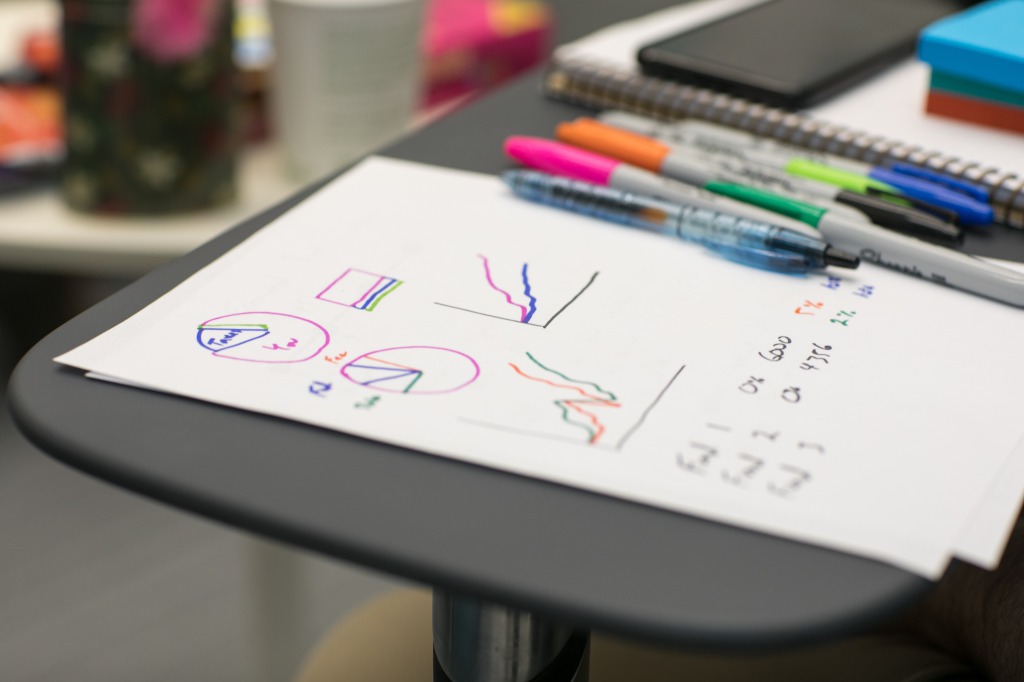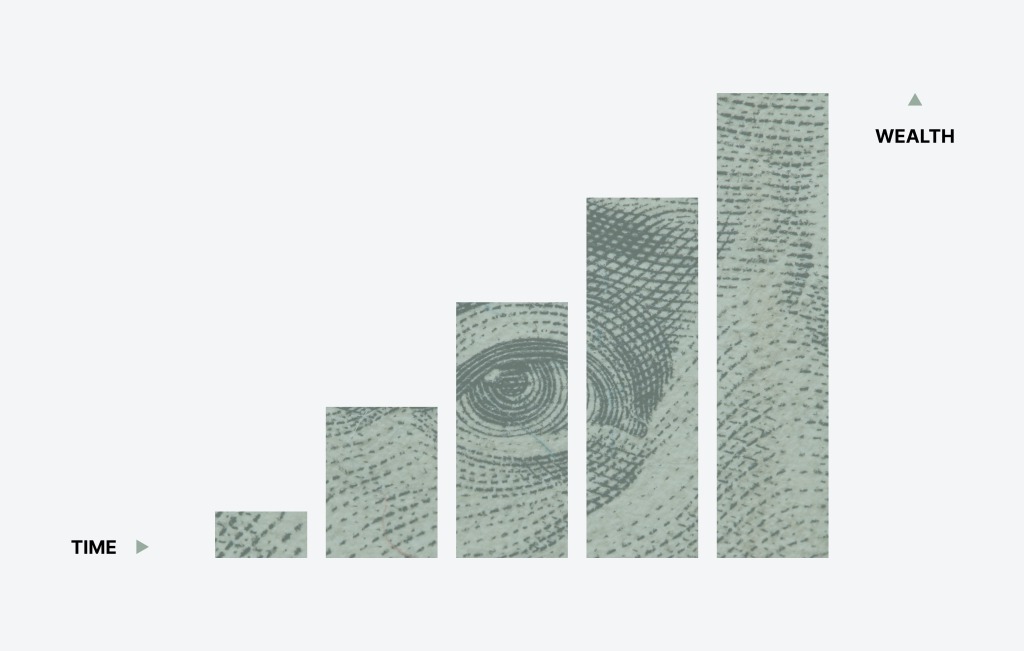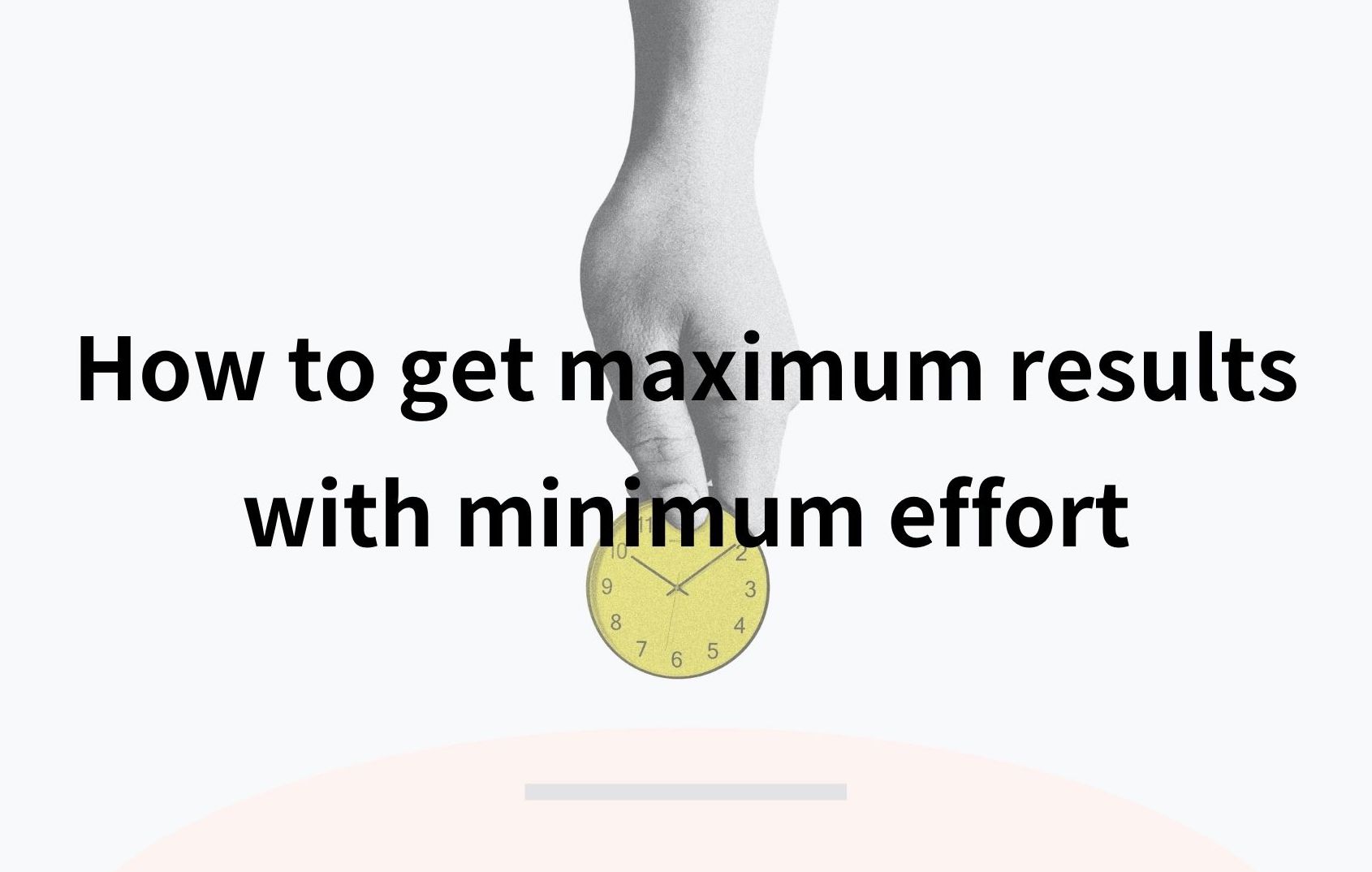
Thank you for reading my blog.
Many of you probably feel this way on a regular basis.
“I don’t have enough time.”
“I want to do more things.”
“I want to be able to work more comfortably and with more time to spare.”
“I’m getting tired and not getting any results.”
If we could achieve more results in less time, that would be great, wouldn’t it?
So this time, we will tell you about a way of life that produces maximum results with minimum effort.
The content of this issue is based on the book “Effortless: Make It Easier to Do What Matters Most” by Greg Mckeown.
Let’s check it out.
What is Effortless Thinking?

If you focus on your most important priorities and try to tackle only those, but it is still too much, you have only two options.
That is, give up or change the way you do things.
Motivation and perseverance are not the solution.
If that were the solution, it would be as simple as just saying, “Let’s all do our best.
No matter how motivated we are, we have limited resources.
If we really want to achieve results in the things that matter, we need to change the way we think about how we approach things.
We need to do it in the easiest way, not by force.
Is it lazy to relax?
To cut back on effort is as if you are cutting corners, and you may feel lazy and somewhat guilty.
There is a tendency to think that working hard is right and taking it easy is wrong, and I think most people have that mindset imprinted on them.
However, relaxing and achieving results is not laziness, but a smart way to live.
It is the best way to stay sane and not give up on what is important.
It is because we don’t work hard that we get results.
The law of diminishing marginal returns

There is a law you should know about in achieving maximum results with minimum effort.
It is the law of diminishing returns.
This means that after a certain point, the amount of effort you put in is less likely to lead to results, and your performance will decline.
For example, when I read, I can read 100 pages in an hour, but it does not mean that I can read the same 100 pages in the second hour.
I get tired of reading, get a little bored, lose my concentration, and no longer even read for two hours straight.
In other words, even if you work hard for two hours straight, your performance is low.
Reading 100 pages for one hour every day is a much more effective way to get more done per hour than trying to read 150 pages for two hours that day.
Instead of blindly trying to compensate for the drop in output by making more effort, it is necessary to refresh yourself and then work on it.
How to achieve your goals effortlessly

- DEFINE: Set clear goals.
When you have a clear idea of what needs to be done, you will be able to concentrate much better.
Close your eyes for a minute and picture what it will look like when the work is completed.
If you have no clear goal and only a vague goal, you will never reach the goal. You will either continue to work endlessly and pointlessly, or you will give up halfway through.
- START: Make the first step as small as possible and create a situation where you can easily start.
Even if the final goal is far away, if the first small goal is clear, it will be easier to move on.
If you think the first step is too hard to take or too far away, break the first step into several more steps.
The more insignificant the first step, the better.
Netflix, the video streaming service that we all know and love, is a great example of taking the first small step.
Founder Reed Hastings’ vision was a grand one: a global streaming service that would offer a large amount of content, much like Netflix does today.
The first thing he did to achieve that grand vision was the simplest thing he could have done: send a single CD to himself.
He was able to move forward appropriately without being overwhelmed by his own vision.
It is a step too small and too great.
- SIMPLIFY: Identify the minimum steps required. (More things not to do.)
Think about what are the minimum steps needed to complete what is in front of you.
While it is important to make each step easier, it is quicker and more effective to remove all unnecessary steps.
Identifying the minimum necessary steps is never about cutting corners or compromising quality.
Removing truly necessary steps leads to a loss of quality, but removing unnecessary steps increases quality.
Would you say that the one-click purchase made possible by Amazon is of low quality? It’s a buying experience that everyone thinks is the best.
- FINISH: Finish it anyway.
Completion is the great thing. If you don’t finish it, it’s nothing.
Finish it before you think about quality.
You all know Mark Zuckerberg’s famous quote, “Done is better than perfect.”
The courage to make something stupid will bring inspiration, and once you get started, you will be able to make something better and better.
It is the accumulation of crappy things that leads to breakthroughs.
- PACE: Dare to go slow in order to get there fast.
When heading toward a goal, it is tempting to start running at full speed from the beginning.
We get excited and try our best, thinking of the success we have achieved.
This in itself is not necessarily a bad thing, but if you try too hard in a hurry from the beginning, you will often run out of breath and eventually slow down.
It’s like the story of the hare and the tortoise.
The key is to find and find the “effortless” pace.
Remember the law of diminishing returns.
The law of diminishing returns states that after a certain point, the amount of effort is less likely to lead to results, and performance will decline.
An effective way to prevent this decline in performance is to set a lower and upper limit.
For example, if the goal is to complete a book manuscript, the lower limit for the daily writing volume is 500 words and the upper limit is 1,000 words.
The lower limit should be enough to keep you motivated and allow you to achieve it even if something unexpected happens.
The upper limit should be enough to make you feel like you are making good progress, but not so much that you get tired.
Keep in mind that “slow is smooth and smooth is fast.”
Seek cumulative rather than linear results

Linear results are exactly like the graph y=x, where the amount of results is proportional to the amount of effort.
A simple example is a part-time job that pays by the hour.
On the other hand, cumulative results are those that are produced exponentially, meaning that a single effort produces multiple results.
For example, a composer who composes a single song and receives royalties for many years has a cumulative result in terms of income, and compound interest in investment is also a cumulative result.
The most important thing in achieving great results with small efforts is to try to generate this cumulative result.
Automating tasks, building relationships of trust, and preventing problems before they occur are all very important in generating cumulative results.
Build a system that will produce the desired results over and over again with as little effort as possible.
This is the way of life that produces maximum results with minimum effort, which is what we are trying to convey in this presentation.
–Postscript–
In this issue, I have shared with you a way of life that produces the maximum results with the minimum amount of effort.
We hope that each of you will build your own system to repeatedly achieve the results you desire with as little effort as possible.
Please try to start small by setting a clear goal and building this mechanism in an effortless manner.
Thank you for reading to the end of this article.
See you again in the next article!
▪️Reference
Greg Mckeown, “Effortless: Make It Easier to Do What Matters Most”




Comments